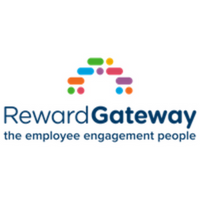How to set your company up to succeed in the new world of work

So, let’s put them to one side and focus on what can make a difference, and that’s with your goals or objectives. These, if created in a strategic and effective way, can make a difference to you and to your organisation in both the short and long-term.
Now before you tune off, thinking that this blog is going to be on how to create objectives, don’t worry. If you want help with this just google ‘SMART objectives’ and there’s lots of information on how to do it.
Instead, I’m going to share with you some developments and trends which are important to keep in mind as you set your goals. These will help you in creating goals which align with both your business and with what is happening all around you.
Technology
The obvious place to start is with technology. Technology has and will continue to both disrupt and shape what we can and need to deliver for our businesses and our employees.
Here are two statistics to illustrate this - the number of mobile phone users has increased by 38% between 2010 and 2016, and the number of social media users has increased 141% during this same period of time. People, our employees, are more connected, they are more tech savvy and they are always on.
This means that if we want to meet the needs of our workforce and at the same time keep pace with what is being called ‘the new world of work’, we need to embrace technology, adding it to our ever growing toolkit. So how do we do this?
Here are three areas I suggest you focus on:
1) Mobiles
We have turned into a mobile-obsessed world, in fact a TIME mobility poll found that 81% of people surveyed said they couldn’t go a day or less without their mobile. So humans can survive for up to three weeks without food and 3-7 days without water, but they can’t handle a day without their mobiles?
What this means is that we have a perfect tool and opportunity to use to engage with our staff today and in the future. Here are two ideas to get you started:
- Text messaging. Texts are great at sharing quick snippets of information such as deadlines and reminders. I used to think that these were intrusive, but my employees have told me over and over again that they would rather a quick text to remind them of something than a long email to do the same.
- Since our employees are living on their mobiles (the average time spent on a mobile in the UK is 90 minutes a day), we need to take advantage of this and make it easy for them to connect to our HR platforms and systems through their mobiles. We can do this with apps or responsive sites ranging from benefit programmes to learning videos. If we build these connections “they will come” (the famous line from the movie ‘Field of Dreams’).
2) Social media
We’re equally obsessed with social media, in fact 25% of all time spent online is on social media. Just like mobiles, the average time spent on social media in the UK is 90 minutes a day However, if my teenage daughter is any indication of the workforce of the future, this number is going to amount to double if not triple in the next few years!
Social media is a tool that should not be feared, but should be embraced. It’s a great way to fight through the noise to go where your employees are already spending their time. Here are a few things to keep in mind when using social media:
- It’s a conversation, not a monologue. The main difference between social media and other methods such as posters, email, etc. is that it provides a two-way conversation, giving your employees the chance to be heard.
This is great because it allows you to not only understand how they react and feel, but respond directly to them. However, what this also means is that you have a responsibility - a responsibility to keep the conversation going, doing so in a timely way. In social media world, if you wait too long to respond to the sender they may become anxious, mistrusting, etc. so keep in mind that minutes count! - One isn’t enough. The average person has five social media accounts at one time. So not only are your employees on social media, but they are flipping from one account to another. What this means is that you can’t “put all your eggs in one basket” as they say, and use only one social media account with your employees.
A good place to start for determining which to use is to ask your employees, survey them to find out which are used most frequently and, use them!
3) Device mesh
The final area is something called ‘device mesh’, and was listed in a survey by Gartner as one of the top 10 strategic technology trends. It can be explained as an expanding set of endpoints people use to access applications and information or interact with others both at work and at home (e.g. computers, laptops, mobiles, etc).
Now if that seems confusing, which it certainly is to me, here’s an example which may make it easier to understand. Picture an employee using a benefit such as an online discount portal. The employee goes onto the portal on their work computer at lunchtime to select a few items they want to buy, but leaves them in their basket as they have to run to a meeting. Once they’re on the train home they pull out their mobile, go into their basket, and complete the transaction. So from the employee’s perspective, the experience follows them from device to device, meshing together the experience.
This connection is something our employees experience outside of the workplace, so their expectations (and the future) is that these experiences will be available in the workplace as well. My suggestion is to keep this in mind as you put in place your reward programmes, looking for as many of these endpoints/connections as possible.
Your Workforce
Another key area to keep in mind when developing your goals is around your workforce itself. How is it changing, and what do you do to set your goals to support the needs of this changing and more diverse workforce? Here are three developments/trends to illustrate this point:
- For the first time ever there are five generations in the workplace - all with different motivations and needs.
- Jobs are no longer for life - it’s been said that ‘job hopping’ is the new normal for millennials.
- Gig workers are on the rise - the number of gig workers, which are workers who get paid for the 'gigs' they do instead of a salary, is increasing. In the UK it’s been estimated that five million people are employed as gig workers in jobs ranging from couriers to food delivery to taxi drivers to video producers, and it’s not slowing down.
This means that it’s now even more important to truly understand your workforce, both now and in the future. Ask yourself - what do my employees need now and what will they need in the future? How do my reward programmes need to change and adapt to be effective in this new world of work? Are they ready for all generations, short-term workers and gig workers? If not, think about what you need to do now and in the future to prepare for them.
In ending, I’d like to share with you a quote from Jacob Morgan, a best-selling author and futurist, “The future of work doesn’t happen to you or to your organisation, it happens because of you or because of your organisation.” We all have an important role to play in understanding the needs of our future workplace and workforce, preparing for it, and making it happen!
Debra Corey is group reward director at Reward Gateway.
This article was provided by Reward Gateway.
Supplied by REBA Associate Member, Reward Gateway
We help the world's leading companies with an employee engagement platform.







